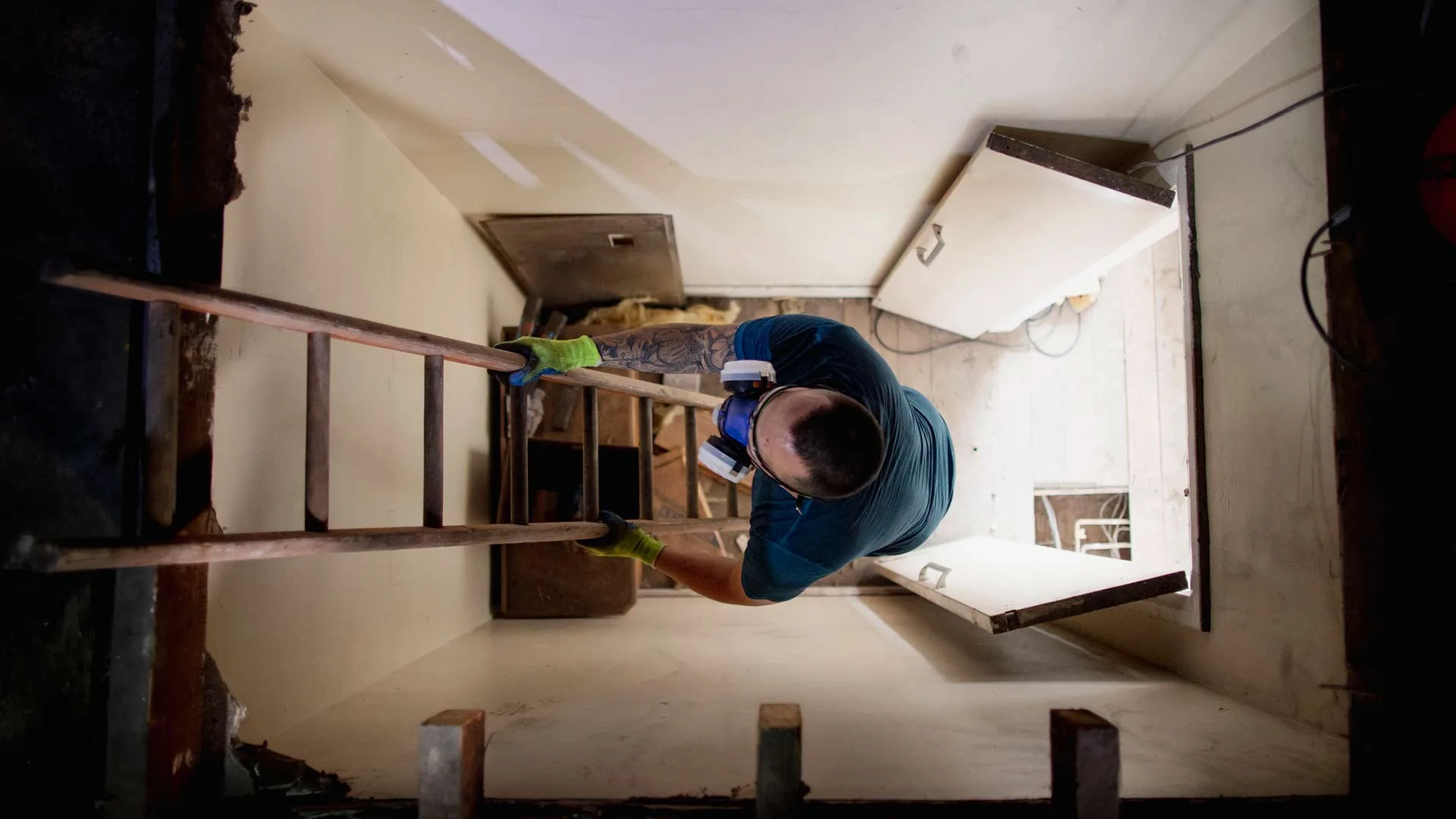If you’re confident that you can install your loft insulation yourself, here’s a brief step-by-step guide on what you need to do.
Remember: always be safe! If you’re not sure what do at any point, stop and speak to a professional.
An uninsulated home loses about 25% of heat through its roof. So, installing loft insulation is a great way to keep that heat in and keep your energy bills under control.
But can you insulate a loft yourself? If you’re confident with DIY and know what you’re doing, then yes! But before you get started, here’s what you need to know about how to insulate a loft.

If you’re confident that you can install your loft insulation yourself, here’s a brief step-by-step guide on what you need to do.
Remember: always be safe! If you’re not sure what do at any point, stop and speak to a professional.
Before you start, you’ll need to find out how much insulation your loft has (if any). Your loft might already have some insulation.
Check first that this is in good condition. If it’s very old and/or has become damaged by weather, vermin or has become compressed, it’s best to remove it and start the job with new insulation. But if it’s in good condition you can just add a layer on top.
To find out how much insulation is installed, use a tape measure to:
When it comes to depth, we recommend a minimum insulation depth of 270mm for your loft.
For example: if you have 120mm of loft insulation already installed, you’ll need to top it up by at least 150mm. Or, if you’re starting from 0mm, you’ll need at least 270mm.
For width: the most common width between joists is 400mm or 600mm. You’ll need insulation rolls that will fit into the space between joists. Most rolls are wider than this but are pre-cut, so they can easily be separated into suitably sized strips.
To calculate how much insulation material you need to buy, measure the area of the space where you’ll install the insulation.
You’ll need to:
This is a process that involves unrolling the insulation and cutting where joists are to make sure they’re flush.
Remember to insulate any water tanks and pipes.
Once you’ve laid the insulation material, re-lay any boards you removed . You’ll probably need to add battens or legs to raise the boards above the new insulation.
And that’s it.
For more information, read B&Q’s in-depth step-by-step guide to insulating a loft. It includes information about working safely where electrical cables or other factors are involved.
When laying insulation, you must not block any vents: these are important for ventilation. Blocking vents can lead to damp in your loft. Vents might be easy to avoid if they’re tile vents in the sloping part of the roof, or vents in a wall. But many lofts are insulated at the eaves, so make sure you don’t cover them with insulation.
You may also need to add more ventilation into the loft space. This could be with tile vents, eaves vents or wall vents. So, speak to a professional if you’re unsure.
The cost of insulating a loft depends on:
For a semi-detached house, 270mm of loft insulation professionally installed in an uninsulated loft costs around £950 for a semi-detached home.
However, if you’re topping the insulation up from 120mm to 270mm, then it costs around £750.
Insulating your loft yourself should cost considerably less. You can buy loft insulation rolls or boards at your local DIY store. The cost for these will vary depending on length, thickness and material.
You can save a significant amount by installing loft insulation:
You should be able to insulate your loft yourself if you’re reasonably confident with DIY and your loft:
In cases where there are damp problems or a more complex insulation system is needed, you should find a professional installer.
When getting any professional work done:
It’s your landlord’s responsibility to make your home safe to live in and free from health hazards. It’s worth checking what housing standards your landlord needs to adhere to as this varies depending on which country you live in. Read GOV.UK’s guide to private renting.
If your home’s Energy Performance Certificate (EPC) rating is F or G, your landlord will likely need to make improvements unless the building is registered as exempt. This could include loft insulation.
If you’re not sure or need more advice, speak to Citizens Advice.
Remember: you must get your landlord’s permission before making improvements to your home. You should also check your tenancy agreement as this will be specific to your home.
Get more information about reducing home heat loss, including different types of insulation and available grants.
Or you can sign up for Energywire, our monthly newsletter, and get the latest energy saving tips straight to your inbox.
Last updated: 7 February 2025